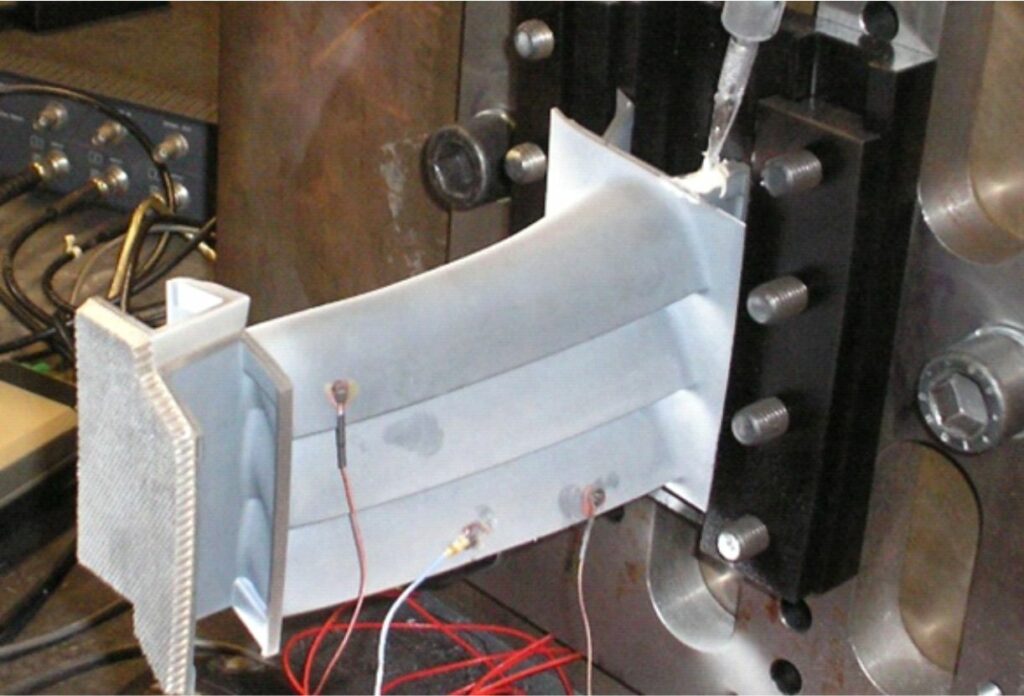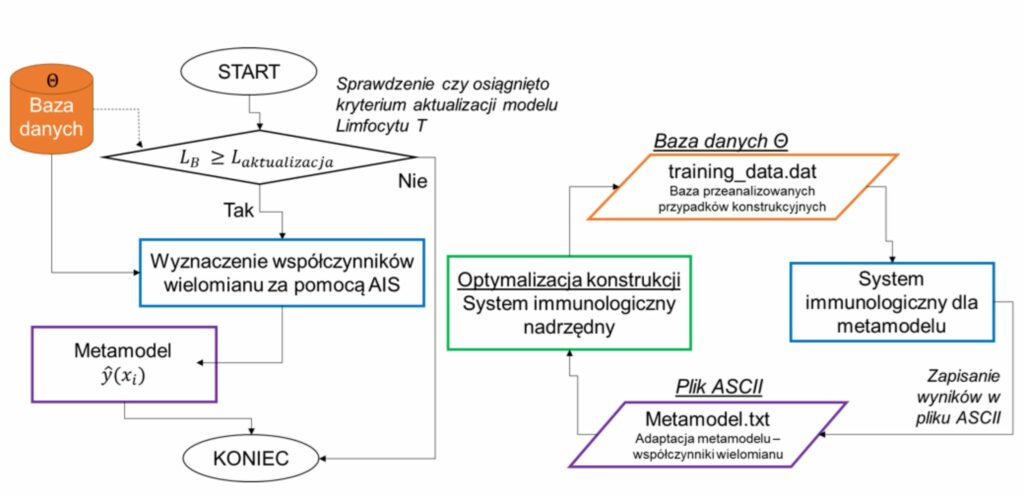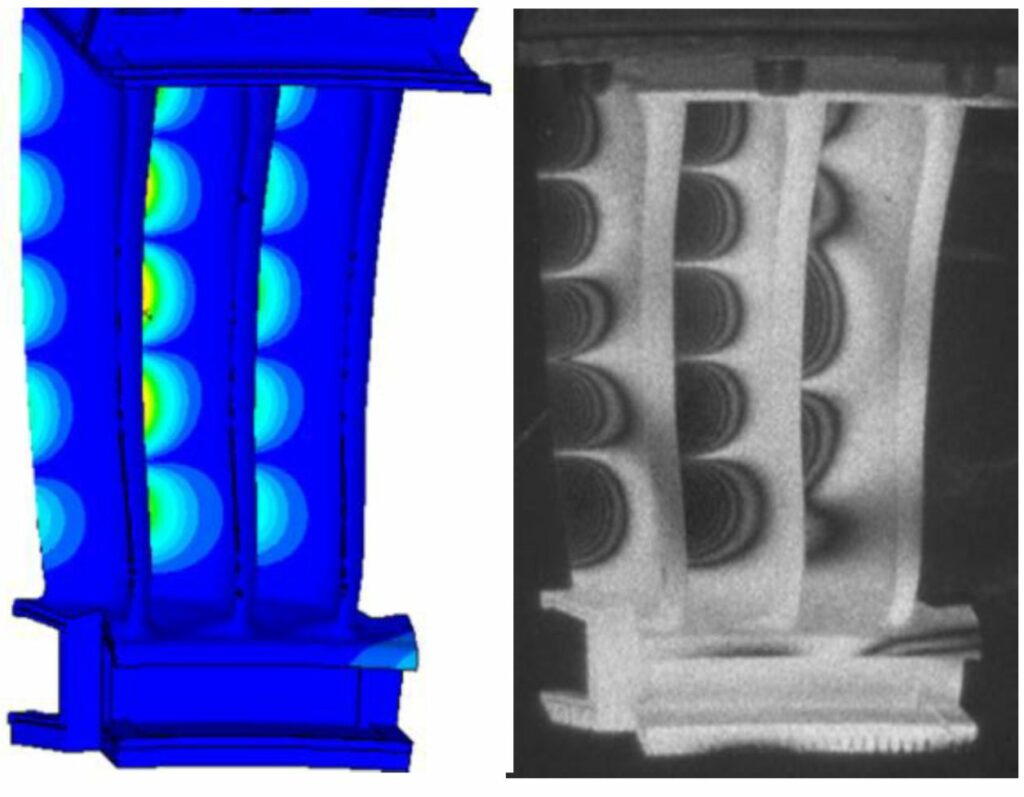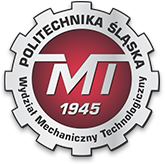On 3 October 2023 at 11:00 a.m. in room 200 of the Faculty of Environmental Engineering, Mining and Energy, the defence of the doctoral thesis of Rafał Robak, M.Sc., entitled: ‘Optimisation of dynamic parameters of low-pressure turbine blades of a turbofan engine with the use of artificial intelligence methods’ took place.
The work was interdisciplinary in nature from the areas of: Mechanical Engineering – where the thesis supervisor was prof. Mirosław Szczepanik, and Environmental, Mining and Power Engineering – where the thesis supervisor was prof. Sebastian Rulik,. The reviewers of the thesis were: prof. Tadeusz Burczyński from the Institute of Fundamental Technological Research, Polish Academy of Sciences, prof. Piotr Lampart from the Institute of Fluid-Flow Machinery, Polish Academy of Sciences and prof. Rafał Buczyński, from the AGH University of Science and Technology.
The work presents optimization process of dynamic characteristics of nozzle guide vane by means of artificial intelligence algorithms. Three-dimensional nozzle guide vane has been simulated by two dimensional elements with axisymmetric and plan stress behavior. Demonstrated consistent modal analysis results between accurate model (3D) and simplified model (2D) for what concern obtained first system mode natural frequency and modal forms. The aim of the simplification was to improve process robustness with no adverse impact on measured responses. Parametric model was defined basing on strain energy distribution for first system mode. Energy pattern reveals in qualitative way which areas should be accounted for parameterization. Basing on discussed approach defined geometrical characteristics related to the thicknesses on turbine casing (three shells), thickness, position and leaning of hooks and vane outer band thickness (in total ten design variables). Parameters range has been defined considering manufacturability constrains and axial distance of the outer band platform. Parametric geometry was used to define FEM model to perform numerical modal analysis aimed to evaluate natural frequency of the system and model area. Using Box-Wilson approach (design of experiment) and metamodel aggregation evaluated surrogate model. Metamodel was a way to verify several design configurations obtained from optimization strategies of artificial intelligence algorithms. Performed sensitivity analysis in order to find major design variables impacting responses (first system mode natural frequency and model area). Sensitivity results with rank correlation factor shows shell thickness above the vane as the major contribution in the responses. Compared commercially implemented genetic algorithm (AG) with artificial immune system (AIS) algorithm and AIS enriched by co-stimulation effect. For performed optimizations demonstrated artificial immune system to be more effective in terms of the obtained model area and number of evaluations through metamodel. Data flow framework for genetic algorithm was managed inside Ansys Workbench. For immune system developed a process based on session file, batch run and CSV ASCII file report to exchange data between algorithm and Ansys Workbench CAE software. Optimal design configurations obtained from metamodel were verified with FEM modal analysis. Verification showed differences up to 0.5% and are acceptable from design perspective. Presented optimization process can be used also in other disciplines like optimization of thermal distribution, stresses or data matching between experimental test and numerical models.













